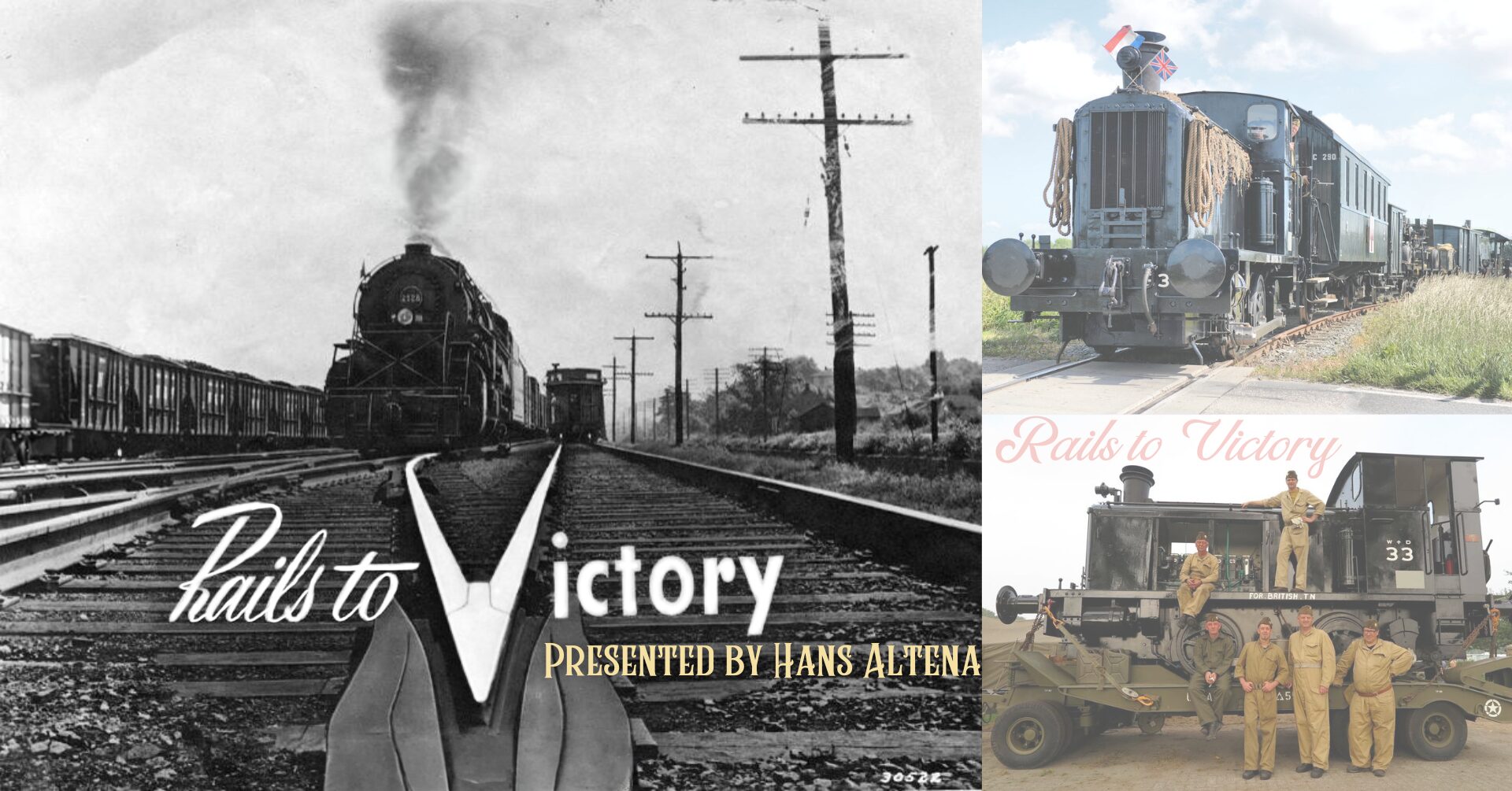We're open Thursday - Sunday, 10:00 AM - 4:00 PM! Also, join us on weekends this holiday season for Santa Trolley!


Join PTM staff, volunteers, and members for our Zoom series, Trolleyology! These programs feature Pennsylvania transit history topics and tales of our collection that you can experience from home. Registration is required but free of charge. Donations are welcome and encouraged.
June 5, 2024 – 7 PM ET – Presented by Hans Altena
Without logistics, both warfare and liberation would be impossible. Such was the case in Europe in 1944, and the same is true today. An army is comprised of many parts: the army unit responsible for transportation on the American side was the Transportation Corps. It included transportation by road, water and rail. Rail transportation was organized in three divisions: the 1st, 2nd and 3rd MRS (Military Railway Services).
After the attack on Pearl Harbor on December 7, 1941 brought the war to American soil, the United States became fully involved in World War Two. The United States declared war on both Japan and Germany. America immediately began taking actions on many fronts to change the tide of the war on both the eastern and western fronts. American industry was mobilized on a massive scale to design and produce military vehicles, including a large amount of railway rolling stock. Commanders realized that the railroads would form the backbone of all military operations in the occupied territories. The enormous quantities of supplies that would be required to liberate the occupied territories could only be transported by rail to the constantly changing front lines. It was calculated that no fewer than 100,000 pieces of rolling stock would be required, understanding that local railway rolling stock could not be relied upon. In cooperation with the British War Department the production of the rolling stock began in January of 1942. This marked the beginning of an interesting and unique historical period.
Due to German destruction, many countries had an immediate need for railroad rolling stock, and transfers were made from the Allied military surplus stores located throughout Europe. The Dutch State Railways (Nederlandse Spoorwegen or NS) purchased various steam and diesel locomotives and cars from the Transportation Corps and the War Department through this channel. A well-known type is the Whitcomb diesel locomotive, two examples of which are now back in the Netherlands since 2018. Presenter Hans Altena played a significant role in the repatriation of the two locomotives. Additionally, Hans is the chair of the “Stichting 162” (162 Foundation) which has fully restored a War Department locomotive and several freight cars. Using various sources, including some that have only recently become available, Hans will present this often overlooked but very special chapter of railroad history.
This program will be recorded and available at a later date on the PTM YouTube channel.
Trolleyology presentations will continue on a regular or semi-regular basis. Interested in presenting? Email Kristen at kfred@patrolley.org! We’re specifically looking for programs related to the Trolley Era in general, Pennsylvania transit history, or stories about our collection. Please join our e-mail list to stay up-to-date with program announcements and other PTM news!
*For the best experience, we recommend downloading Zoom in advance.
NOTE: This is a virtual event